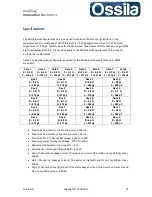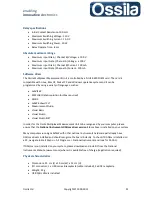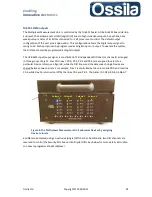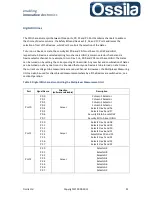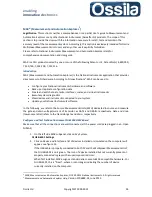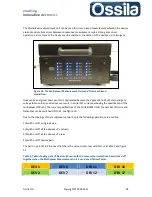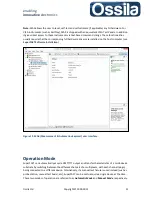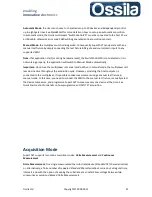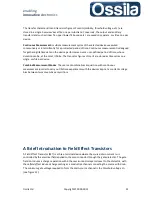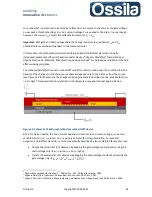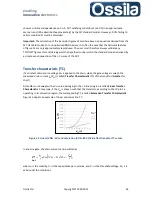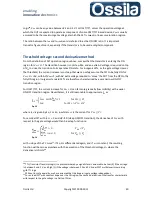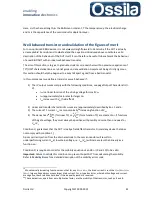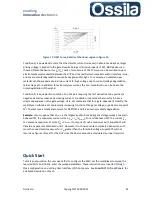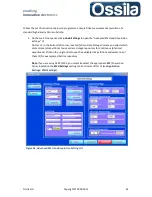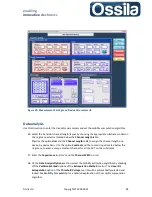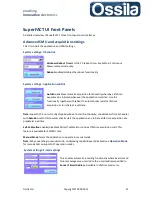
enabling
innovative
electronics
Ossila Ltd
Copyright © 2009-2015
36
shows a sub-linear dependence on V
DS
. A DUT satisfying conditions 1) and 2) in an approximate
manner can still be described (approximately) by the FET standard model. However, DUTs failing to
satisfy condition 3) must be discarded.
Important:
The calculation of the transistor figures of merit are based on equations derived from the
FET standard model. For non optimised R&D devices, it is often the case that the hallmark features
of figure 13 are only approximately reproduced. The user must therefore always validate any
TFT/OFET figures of merit/data against the hypothesis under which the standard model is derived by
a simple visual inspection of the I-V curves of the DUT.
Transfer characteristic (TC)
If a constant drain-source voltage V
DS
is applied to the drain, while the gate voltage is swept, the
measured drain current I
DS
(V
GS
) is called
Transfer Characteristic
(TC) of the transistor (
transfer
for
short).
A transfer curve swept with a V
DS
value belonging to the I-V linear region is called
Linear Transfer
Characteristic
. Conversely, if the V
DS
is chosen such that the transistor, according to the I-V plot, is
operating in its saturation region, the corresponding TC is called
Saturation Transfer Characteristic
.
Figure 15 depicts an example of linear and saturation TC.
Figure 15. Linear (VDS=-5 V) and saturation (VDS=-80 V) field-effect transistor TC curves.
In linear regime, the drain current can be written as
,
Eq. 1
where
is the mobility, C
ox
is the capacitance per unit area, and V
Th
is the threshold voltage. Eq. 1 is
valid under the conditions

